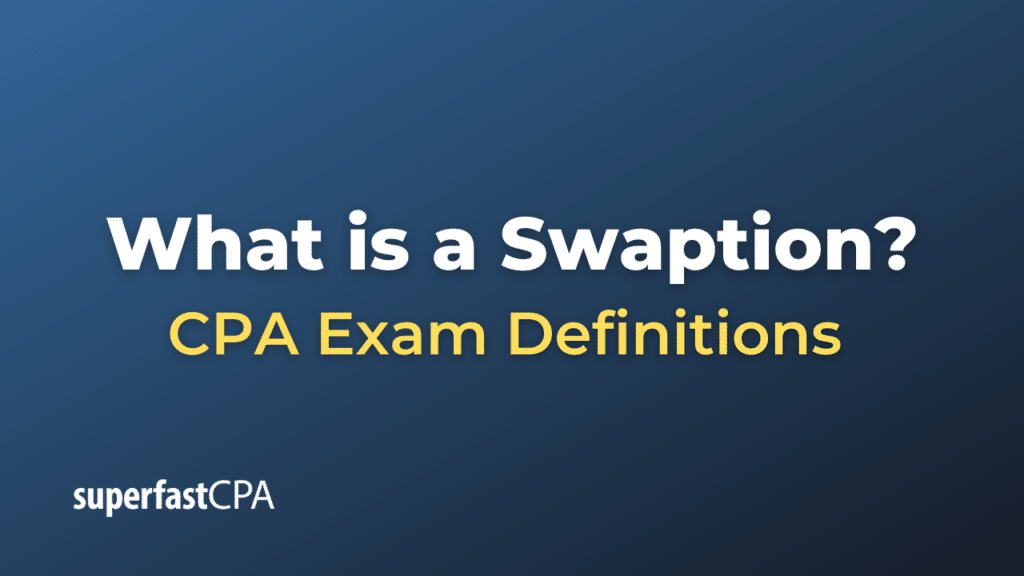Swaption
A “swaption” is a financial derivative instrument that provides an investor the right, but not the obligation, to enter into a specified swap agreement with another party at a future date. The term “swaption” is derived from the combination of “swap” and “option”, reflecting its nature as an option on a swap.
There are two primary types of swaptions:
- Receiver Swaption: Gives the holder the right to enter into a swap where they will receive the fixed leg and pay the floating leg.
- Payer Swaption: Grants the holder the right to enter into a swap where they will pay the fixed leg and receive the floating leg.
The holder of a swaption pays a premium to the other party (the writer of the swaption) for the right to enter into the swap. The terms of the potential future swap (such as notional amount, fixed rate, and maturity) are specified at the time the swaption is created.
Swaptions can be used for various purposes, including:
- Speculating on Interest Rates: An investor expecting a decline in interest rates might purchase a receiver swaption, hoping to profit by later entering into a swap where they receive a higher fixed rate and pay a lower floating rate.
- Hedging: A company expecting to take on a floating rate debt in the future might buy a payer swaption to hedge against the risk of rising interest rates.
- Enhancing Yield: An investor might sell a swaption and collect the premium, betting that the swaption will not be exercised.
Example of a Swaption
Let’s dive into a detailed example involving a swaption.
Scenario:
Suppose a pension fund anticipates receiving a significant cash inflow two years from now. They expect to invest this cash in a fixed-rate bond, but they’re concerned about the risk of rising interest rates over the next two years, which would result in them receiving a lower yield on the bond.
To hedge against this risk, the pension fund decides to purchase a payer swaption with a 2-year term (the option’s expiration date) and a 5-year underlying swap maturity at a fixed rate of 4%.
The pension fund pays a premium of $200,000 for this swaption.
Two Years Later:
- Interest Rates Have Risen:
- The prevailing 5-year fixed rate is now 5%.
- Since the pension fund has the right (but not the obligation) to enter into a swap agreement where they pay 4% and receive a floating rate (which will likely be close to 5% given the current environment), they decide to exercise the swaption.
- By doing this, they effectively lock in a net interest rate that’s close to 1% (5% received minus 4% paid) for the 5-year term of the swap. This helps offset the lower yield they’ll get on the fixed-rate bond they’ll buy with their cash inflow.
- Interest Rates Have Fallen:
- The prevailing 5-year fixed rate is now 3%.
- In this case, it would not be beneficial for the pension fund to exercise the swaption, since they’d be obliged to pay 4% in the swap and receive approximately 3%.
- The pension fund would choose not to exercise the swaption and would simply lose the $200,000 premium they paid.
This example highlights how a swaption can be used as a hedging tool against interest rate movements. The pension fund was willing to pay a premium upfront for the flexibility and protection against rising interest rates in the future. The decision to exercise the swaption depends on the interest rate environment when the option matures.













